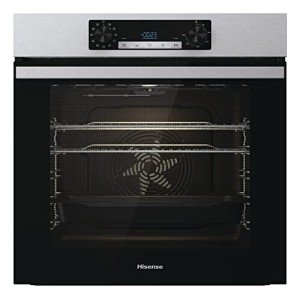cheapest-fan-oven6617
cheapest-fan-oven6617
24-Hours To Improve Single Oven
The Ultimate Guide to Single Ovens: Features, Benefits, and FAQs
When it pertains to modern-day kitchen appliances, the single oven stands out as a flexible and essential tool for any cooking enthusiast. In today’s busy world, where benefit fulfills cooking craftsmanship, single ovens play an essential function in meal preparation. Comprehending the features, advantages, and types of single ovens can simplify the process of choosing the perfect home appliance for your kitchen. This comprehensive guide intends to offer a thorough take a look at single ovens, their specs, and answers to regularly asked questions.
What is a Single Oven?
A single oven is a kitchen home appliance that includes one primary cooking compartment. It is designed to carry out numerous cooking functions such as baking, roasting, broiling, and more. Unlike double ovens, which consist of two separate cavities, single ovens take full advantage of space effectiveness, making them appropriate for smaller sized kitchen areas or those who often prepare meals for a couple of individuals.
The Anatomy of a Single Oven
In order to value the functionality of a single oven, comprehending its key elements is necessary:
| Component | Description |
|---|---|
| Cooking Cavity | Main area where food is positioned for cooking. |
| Control Panel | Interface for choosing cooking modes and adjusting temperature level. |
| Heating Elements | Metal coils that generate heat (frequently discovered at the top and bottom). |
| Oven Door | Glass panel that permits exposure into the cooking space. |
| Racks | Removable racks that accommodate numerous dishes at various heights. |
Types of Single Ovens
Single ovens can be found in numerous types based on their heating techniques and styles. Here are some popular choices:
-
Conventional Ovens: Utilize gas or electrical power for a standard cooking experience. They provide constant heat for baking and roasting.
-
Convection Ovens: Equipped with a fan that flows hot air, leading to faster cooking times and even heat distribution.
-
Steam Ovens: Use steam to cook food, maintaining moisture and nutrients. Perfect for healthier cooking techniques.
-
Wall Ovens: Built into the wall to save area; they can improve kitchen visual appeals while providing functionality.
-
Microwave Ovens: While not a standard oven, modern microwave can likewise bake and roast, offering benefit for fast meal prep.
Functions to Look for in a Single Oven
When purchasing a single oven, consider the following functions to guarantee you pick a device that suits your cooking needs:
-
Capacity: Ensure the oven’s size accommodates your normal cooking volume. Standard capacities normally range from 4.5 to 6 cubic feet.
-
Temperature Range: Look for an oven that offers a broad temperature level range for various cooking techniques.
-
Self-Cleaning Options: Self-cleaning modes bypass the requirement for severe chemicals, making upkeep simpler.
-
Smart Technology: Wi-Fi-enabled designs permit remote operation and tracking through mobile phone applications.
-
Interior Lighting: Bright, incandescent or LED lighting assists monitor your food without opening the door.
Average Sizes and Capacities of Single Ovens
| Type | Typical Capacity (cubic feet) | Width (inches) | Height (inches) |
|---|---|---|---|
| Standard Conventional | 5.0 – 6.0 | 30 | 28 – 30 |
| Compact/Apartment Size | 3.0 – 4.0 | 24 | 28 – 30 |
| Wall Oven | 4.5 – 5.0 | 24 – 30 | 28 – 30 |
Benefits of Using a Single Oven
Purchasing a single oven offers various advantages for both amateur cooks and seasoned chefs alike:
-
Space Efficiency: A single oven occupies less area than a double oven, making it ideal for smaller kitchen areas.
-
Affordable: Generally cheaper compared to double ovens, both in preliminary purchase and energy usage.
-
Flexibility: Capable of performing different cooking techniques, making it ideal for a range of recipes.
-
Reduce of Use: With a smaller cooking area, heat distribution tends to be more effective, simplifying the cooking procedure.
-
Maintenance: Fewer elements mean less intricacy when it concerns cleaning and repair work.
Regularly Asked Questions (FAQs)
What is the average life-span of a single oven?
A single oven usually lasts in between 10 to 15 years, depending on usage, maintenance, and the quality of the appliance.
How can a single oven conserve energy?
Single ovens need less power than double ovens, and many models are designed with energy effectiveness in mind, reducing general energy consumption.
Can a stove replace a standard oven?
Yes, a convection oven can change a basic oven as it provides comparable cooking functions alongside much faster cooking times.
Are single ovens ideal for large families?
While single ovens can accommodate a good quantity of food, bigger households may discover that a double oven or an extra single oven matches their needs better.
How often should I clean my single oven?
It is suggested to clean your oven every three to six months, depending on usage, to keep hygiene and efficiency, specifically with designs that feature self-cleaning alternatives.
Is installation hard for a single oven?
A lot of single Stainless steel Ovens come with simple setup guidelines. However, speaking with a professional is recommended for safe and correct setup, especially for gas ovens.
The single oven remains a cornerstone appliance in kitchens worldwide. Its versatility, effectiveness, and space-saving style make it an attractive alternative for many families. Whether you are a periodic cook or a cooking enthusiast, selecting the best single oven can significantly boost your cooking experience. With the details shared in this guide, prospective purchasers can make a notified choice, guaranteeing they select an oven that best suits their culinary requirements and lifestyle.



